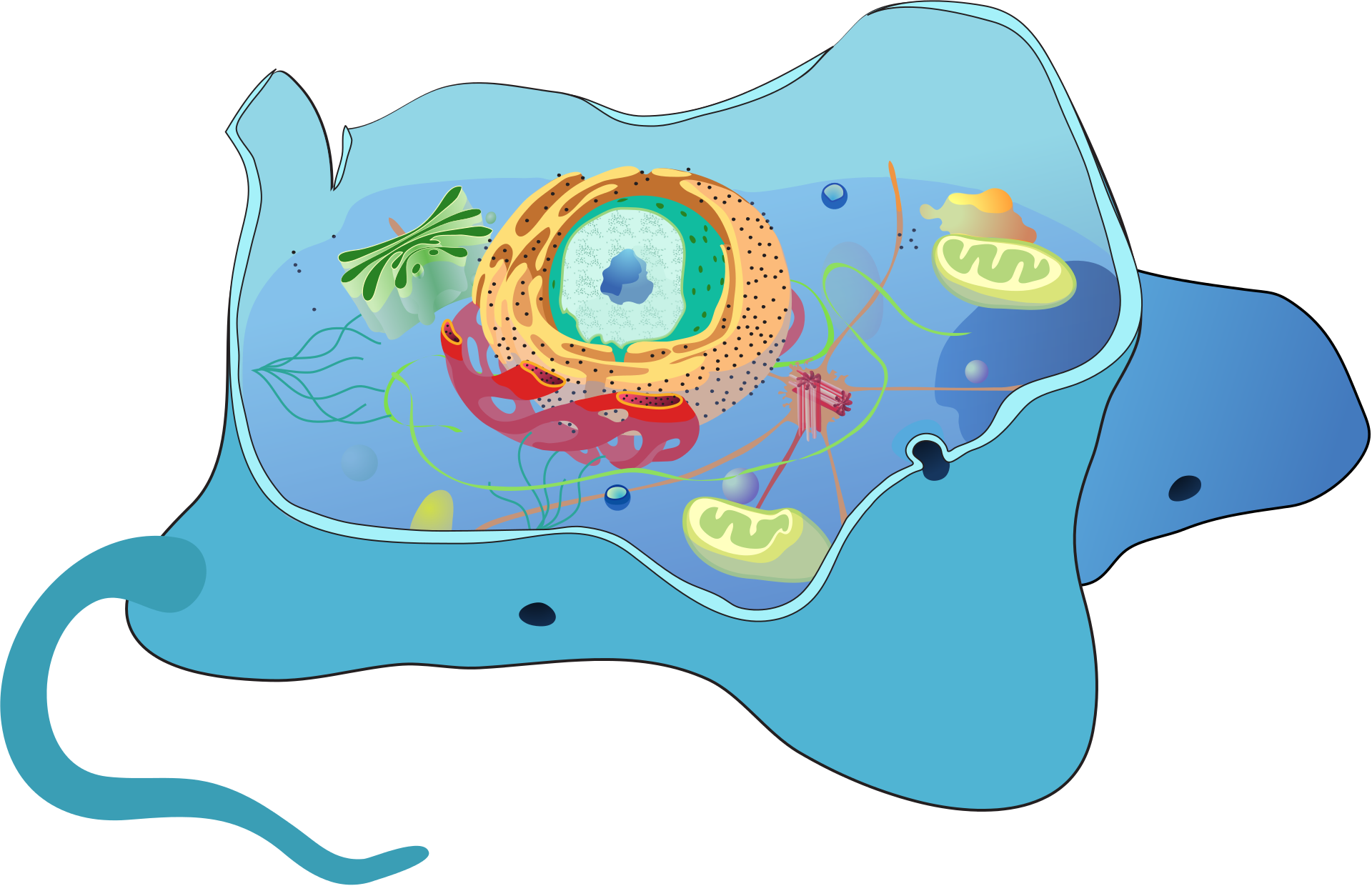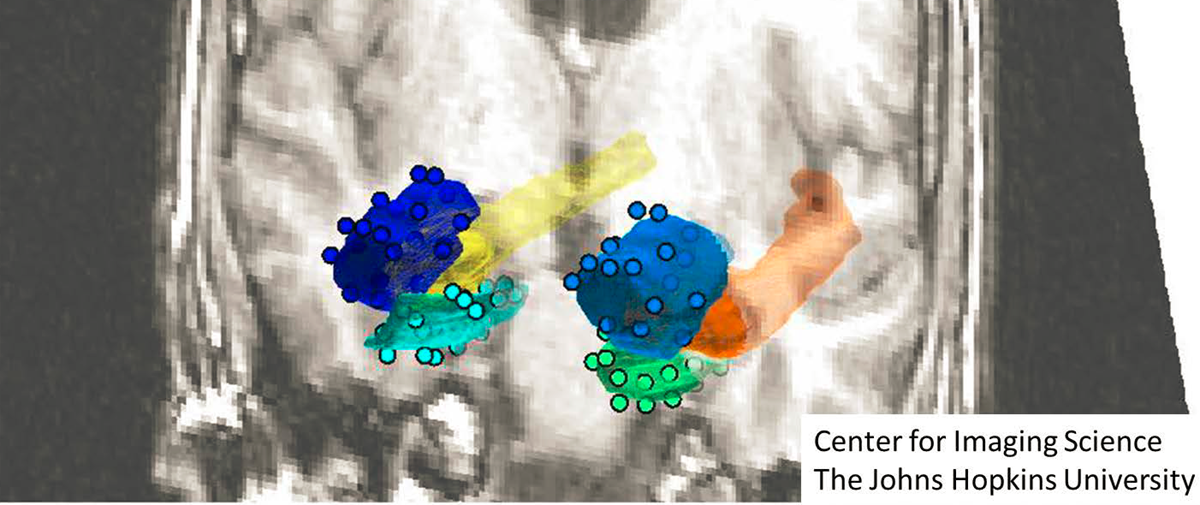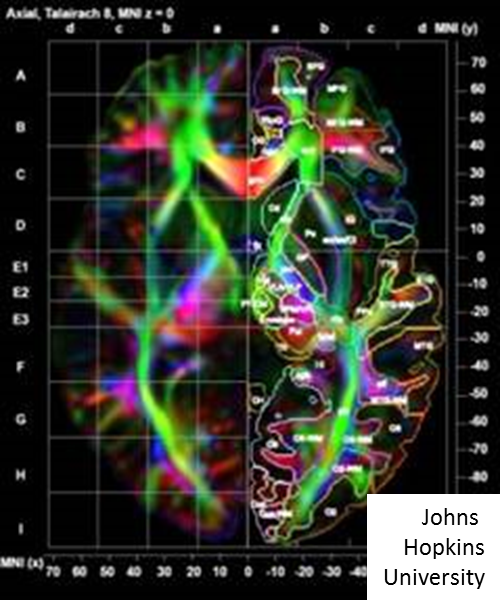| |
|
|
Anatomy
Anatomy (Greek anatomē, 'dissection') is the branch of biology concerned with the study of the structure of organisms and their parts. Anatomy is a branch of natural science which deals with the structural organization of living things. It is an old science, having its beginnings in prehistoric times. Anatomy is inherently tied to developmental biology, embryology, comparative anatomy, evolutionary biology, and phylogeny, as these are the processes by which anatomy is generated over immediate (embryology) and long (evolution) timescales. Anatomy and physiology, which study (respectively) the structure and function of organisms and their parts, make a natural pair of related disciplines, and they are often studied together. Human anatomy is one of the essential basic sciences that are applied in medicine.
The discipline of anatomy is divided into macroscopic and microscopic anatomy. Macroscopic anatomy, or gross anatomy, is the examination of an animal's body parts using unaided eyesight. Gross anatomy also includes the branch of superficial anatomy. Microscopic anatomy involves the use of optical instruments in the study of the tissues of various structures, known as histology, and also in the study of cells.
The history of anatomy is characterized by a progressive understanding of the functions of the organs and structures of the human body. Methods have also improved dramatically, advancing from the examination of animals by dissection of carcasses and cadavers (corpses) to 20th century medical imaging techniques including X-ray, ultrasound, and magnetic resonance imaging. (W)

Stylized cutaway diagram of an animal cell (with flagella). |
|
|
|
|
Anatomy, Computational
Computational anatomy is an interdisciplinary field of biology focused on quantitative investigation and modelling of anatomical shapes variability. It involves the development and application of mathematical, statistical and data-analytical methods for modelling and simulation of biological structures.
The field is broadly defined and includes foundations in anatomy, applied mathematics and pure mathematics, machine learning, computational mechanics, computational science, biological imaging, neuroscience, physics, probability, and statistics; it also has strong connections with fluid mechanics and geometric mechanics. Additionally, it complements newer, interdisciplinary fields like bioinformatics and neuroinformatics in the sense that its interpretation uses metadata derived from the original sensor imaging modalities (of which Magnetic Resonance Imaging is one example). It focuses on the anatomical structures being imaged, rather than the medical imaging devices. It is similar in spirit to the history of Computational linguistics, a discipline that focuses on the linguistic structures rather than the sensor acting as the transmission and communication media.
In computational anatomy, the diffeomorphism group is used to study different coordinate systems via coordinate transformations as generated via the Lagrangian and Eulerian velocities of flow in ℝ3. The flows between coordinates in computational anatomy are constrained to be geodesic flows satisfying the principle of least action for the Kinetic energy of the flow. The kinetic energy is defined through a Sobolev smoothness norm with strictly more than two generalized, square-integrable derivatives for each component of the flow velocity, which guarantees that the flows in ℝ3 are diffeomorphisms. It also implies that the diffeomorphic shape momentum taken pointwise satisfying the Euler-Lagrange equation for geodesics is determined by its neighbors through spatial derivatives on the velocity field. This separates the discipline from the case of incompressible fluids for which momentum is a pointwise function of velocity. Computational anatomy intersects the study of Riemannian manifolds and nonlinear global analysis, where groups of diffeomorphisms are the central focus. Emerging high-dimensional theories of shape are central to many studies in computational anatomy, as are questions emerging from the fledgling field of shape statistics. The metric structures in computational anatomy are related in spirit to morphometrics, with the distinction that Computational anatomy focuses on an infinite-dimensional space of coordinate systems transformed by a diffeomorphism, hence the central use of the terminology diffeomorphometry, the metric space study of coordinate systems via diffeomorphisms. (W)

Figure depicting three medial temporal lobe structures amgydala, entorhinal cortex and hippocampus with fiducial landmarks depicted as well embedded in the MRI background. |
|

Triangulated mesh surfaces depicting subcortical structures amygdala, hippocampus, thalamus, caudate, putamen, ventricles.The shapes are denoted represented as triangulated meshes. |
|

Image showing a diffusion tensor image with three color levels depicting the orientations of the three eigenvectors of the matrix image I(x), x ∊ ℝ2, matrix valued image; each of three colors represents a direction.
|
|
|
|
|
|
| |
|
Behavioural genetics
Behavioural genetics, also referred to as behaviour genetics, is a field of scientific research that uses genetic methods to investigate the nature and origins of individual differences in behaviour. While the name "behavioural genetics" connotes a focus on genetic influences, the field broadly investigates genetic and environmental influences, using research designs that allow removal of the confounding of genes and environment. Behavioural genetics was founded as a scientific discipline by Francis Galton in the late 19th century, only to be discredited through association with eugenics movements before and during World War II. In the latter half of the 20th century, the field saw renewed prominence with research on inheritance of behaviour and mental illness in humans (typically using twin and family studies), as well as research on genetically informative model organisms through selective breeding and crosses. In the late 20th and early 21st centuries, technological advances in molecular genetics made it possible to measure and modify the genome directly. This led to major advances in model organism research (e.g., knockout mice) and in human studies (e.g., genome-wide association studies), leading to new scientific discoveries.
Findings from behavioural genetic research have broadly impacted modern understanding of the role of genetic and environmental influences on behaviour. These include evidence that nearly all researched behaviors are under a significant degree of genetic influence, and that influence tends to increase as individuals develop into adulthood. Further, most researched human behaviours are influenced by a very large number of genes and the individual effects of these genes are very small. Environmental influences also play a strong role, but they tend to make family members more different from one another, not more similar. (W)
|
|
|
Bioinformatics
Bioinformatics is an interdisciplinary field that develops methods and software tools for understanding biological data, in particular when the data sets are large and complex. As an interdisciplinary field of science, bioinformatics combines biology, computer science, information engineering, mathematics and statistics to analyze and interpret the biological data. Bioinformatics has been used for in silico analyses of biological queries using mathematical and statistical techniques.
Bioinformatics includes biological studies that use computer programming as part of their methodology, as well as a specific analysis "pipelines" that are repeatedly used, particularly in the field of genomics. Common uses of bioinformatics include the identification of candidates genes and single nucleotide polymorphisms (SNPs). Often, such identification is made with the aim of better understanding the genetic basis of disease, unique adaptations, desirable properties (esp. in agricultural species), or differences between populations. In a less formal way, bioinformatics also tries to understand the organizational principles within nucleic acid and protein sequences, called proteomics. (W)

Interactions between proteins are frequently visualized and analyzed using networks. This network is made up of protein–protein interactions from Treponema pallidum, the causative agent of syphilis and other diseases.
The protein interaction network of T. pallidum including 576 proteins and 991 interactions. Nodes are color-coded according to TIGR main roles. Proteins involved in DNA metabolism are shown as enlarged red circles. |
|

Early bioinformatics—computational alignment of experimentally determined sequences of a class of related proteins; see § Sequence analysis for further information. |
|
|
|
|
Biological engineering
Biological engineering, bioengineering, or bio-engineering is the application of principles of biology and the tools of engineering to create usable, tangible, economically-viable products. Biological engineering employs knowledge and expertise from a number of pure and applied sciences, such as mass and heat transfer, kinetics, biocatalysts, biomechanics, bioinformatics, separation and purification processes, bioreactor design, surface science, fluid mechanics, thermodynamics, and polymer science. It is used in the design of medical devices, diagnostic equipment, biocompatible materials, renewable bioenergy, ecological engineering, agricultural engineering, and other areas that improve the living standards of societies. Examples of bioengineering research include bacteria engineered to produce chemicals, new medical imaging technology, portable and rapid disease diagnostic devices, prosthetics, biopharmaceuticals, and tissue-engineered organs. Bioengineering overlaps substantially with biotechnology and the biomedical sciences in a way analogous to how various other forms of engineering and technology relate to various other sciences (such as aerospace engineering and other space technology to kinetics and astrophysics). (W)
|
|
|
Biological systematics
Biological systematics is the study of the diversification of living forms, both past and present, and the relationships among living things through time. Relationships are visualized as evolutionary trees (synonyms: cladograms, phylogenetic trees, phylogenies). Phylogenies have two components: branching order (showing group relationships) and branch length (showing amount of evolution). Phylogenetic trees of species and higher taxa are used to study the evolution of traits (e.g., anatomical or molecular characteristics) and the distribution of organisms (biogeography). Systematics, in other words, is used to understand the evolutionary history of life on Earth.
The word systematics is derived from Latin word `systema', which means systematic arrangement of organisms. Carl Linnaeus used 'Systema Naturae' as the title of his book. (W)
|
|
|
Biomedical sciences
Biomedical sciences are a set of sciences applying portions of natural science or formal science, or both, to knowledge, interventions, or technology that are of use in healthcare or public health. Such disciplines as medical microbiology, clinical virology, clinical epidemiology, genetic epidemiology, and biomedical engineering are medical sciences. In explaining physiological mechanisms operating in pathological processes, however, pathophysiology can be regarded as basic science.
Biomedical Sciences, as defined by the UK Quality Assurance Agency for Higher Education Benchmark Statement in 2015, includes those science disciplines whose primary focus is the biology of human health and disease and ranges from the generic study of biomedical sciences and human biology to more specialised subject areas such as pharmacology, human physiology and human nutrition. It is underpinned by relevant basic sciences including anatomy and physiology, cell biology, biochemistry, microbiology, genetics and molecular biology, immunology, mathematics and statistics, and bioinformatics. As such the biomedical sciences have a much wider range of academic and research activities and economic significance than that defined by hospital laboratory sciences. Biomedical Sciences are the major focus of bioscience research and funding in the 21st century. (W)
|
|
|
Biomedicine
Biomedicine (also referred to as Western medicine, mainstream medicine or conventional medicine) is a branch of medical science that applies biological and physiological principles to clinical practice. Biomedicine stresses standardized, evidence-based treatment validated through biological research, with treatment administered via formally trained doctors, nurses, and other such licensed practitioners.
Biomedicine also can relate to many other categories in health and biological related fields. It has been the dominant system of medicine in the Western world for more than a century.
It includes many biomedical disciplines and areas of specialty that typically contain the "bio-" prefix such as molecular biology, biochemistry, biotechnology, cell biology, embryology, nanobiotechnology, biological engineering, laboratory medical biology, cytogenetics, genetics, gene therapy, bioinformatics, biostatistics, systems biology, neuroscience, microbiology, virology, immunology, parasitology, physiology, pathology, anatomy, toxicology, and many others that generally concern life sciences as applied to medicine. (W)
|
|
|
Biostatistics
Biostatistics are the development and application of statistical methods to a wide range of topics in biology. It encompasses the design of biological experiments, the collection and analysis of data from those experiments and the interpretation of the results. (W) |
|
|
Biotechnology
Biotechnology is a broad area of biology, involving the use of living systems and organisms to develop or make products. Depending on the tools and applications, it often overlaps with related scientific fields. In the late 20th and early 21st centuries, biotechnology has expanded to include new and diverse sciences, such as genomics, recombinant gene techniques, applied immunology, and development of pharmaceutical therapies and diagnostic tests. The term "Biotechnology" was first used by "Karl Ereky" in 1919, meaning the production of products from raw materials with the aid of living organisms.. (W)

DNA microarray chip – some can do as many as a million blood tests at once. (Example of an approximately 37,500 probe spotted oligo microarray with enlarged inset to show detail) |
|

Computer-generated image of insulin hexamers highlighting the threefold symmetry, the zinc ions holding it together, and the histidine residues involved in zinc binding. |
|
|
|
|
|

